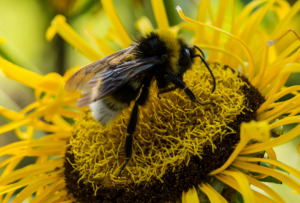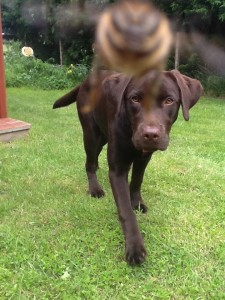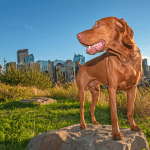Bee and Wasp Stings in Dogs – Symptoms and Treatment.
In the summer season, bee and wasp stings in dogs are quite common, but should happen, would you know what to do? Holidays4Dogs provides some hints on what to do in the even of bee and wasp stings in dogs.
Most dogs are curious creatures and will often chase things that move including small insects. Many dogs become quite quite agitated by the presence of bees and wasps during the summer months. They can be also be excited by the ‘buzzing’ noise – especially if when insects ‘buzz’ around the face. It is common for dogs to snap at flying insects. 
While this might seem an amusing spectacle, it can also be quite hazardous if the dog receives a sting from a bee, or wasp. Teaching your dog the ‘leave it’ cue, can be a useful tip in these circumstances.
Most stings are not life threatening, in people, or dogs. However, they can cause various bodily responses, including allergic reactions.
Symptoms.
If your dog is stung by a bee, monitor your dog carefully for signs of swelling. This is particularly important if the dog has been stung around the face, or neck area. Some dogs may break out in bumps, (hives) all over their body.
More severe signs to watch for are;-
- severe hives all over the body,
- difficulty in breathing,
- sudden diarrhoea,
- vomiting, drooling,
- weakness, or pale gums.
It is essential you get your dog to the vet immediately if you see any of these symptoms.
Treatment.
If possible, try and establish where on the body the dog has been stung. Stings to the face and throat can be potentially more serious.
try and establish where on the body the dog has been stung. Stings to the face and throat can be potentially more serious.
Benadryl – frequently used to treat human allergies, – is often used to treat insect bites in dogs. The vet may inject this for faster action. In addition, it can be administered as a precautionary measure for dogs that have been stung in the mouth, head, or neck. Dogs which have gone into anaphylactic shock will receive respiratory support and intravenous fluids.
If you can still see a barbed bee sting in your dogs skin, you can try to carefully remove. Do this by dragging a piece of card across the area, to dislodge it. If using tweezers, be careful not to ‘pump’ more of the sting into the dog.
Apply ice, wrapped in a tea towel, to help soothe the area affected and reduce any swelling. It is not usually necessary to try and remove wasp stings.
Because bee stings are acidic, you can try the application of a mild alkali such as Bicarbonate of Soda – diluted, and applied to the affected area.


